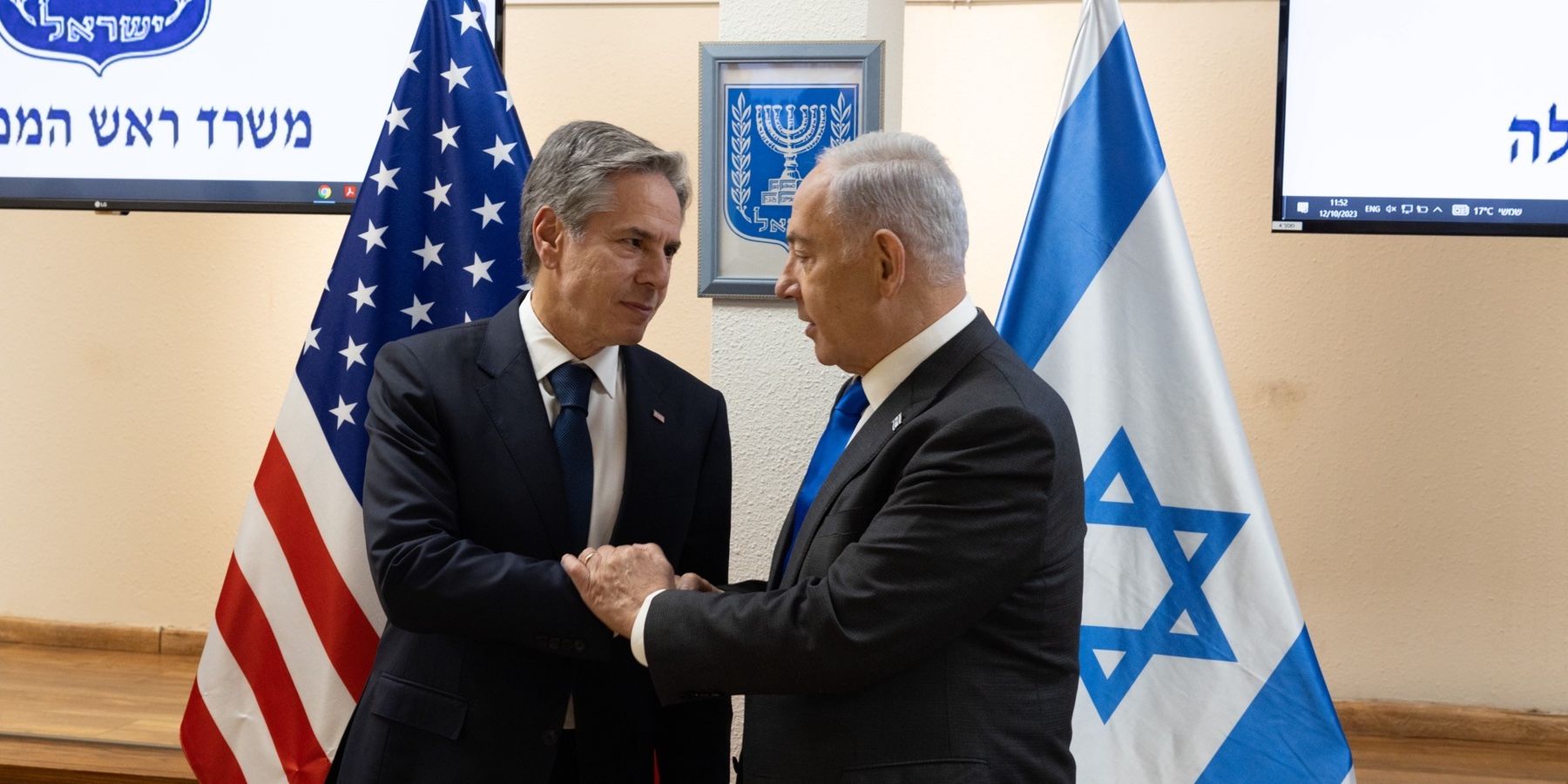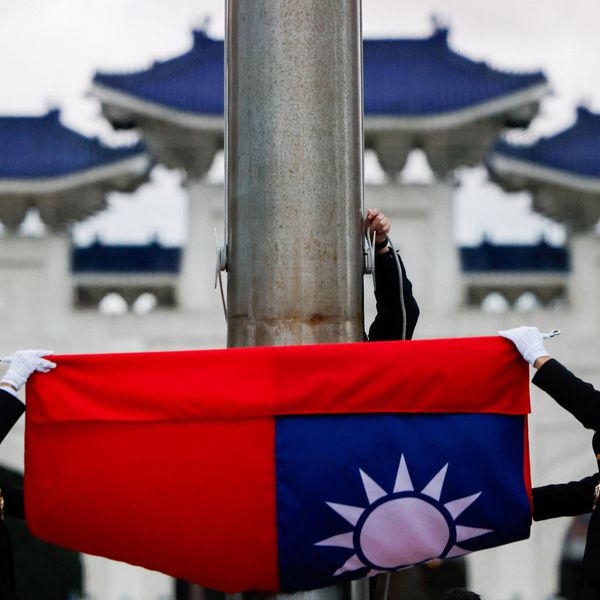Hamas’s attack on Israel last week was what any reasonable person would consider an atrocity deserving of moral outrage. Hundreds of innocent civilians were killed, and dozens more were taken into captivity. It thus is understandable that such an event would elicit intense emotion and a thirst for revenge.
Being understandable is not the same as being wise or effective, for Israel itself or for regional peace and security.
Israel has now embarked on a violent offensive against the Gaza Strip and its residents. However, as much as that offensive may be defended as intended to establish deterrence or to destroy a hostile military force, it is in large part an act of raw revenge. It is a national catharsis amid an atmosphere of intense grief and anger.
The casualty count from the Israeli bombardment of the Gaza Strip is rising too fast to venture an up-to-date figure, but Palestinian health authorities reported that as of Monday, 2,800 Palestinians had been killed and 10,000 wounded, with more than half of the dead being women and children. In addition, Israel — which already had maintained a blockade of Gaza — cut off all movement of food, fuel, water, and electricity to the territory.
This is quickly generating a humanitarian disaster of a proportion commensurate with the Strip’s population of more than two million, with specific consequences ranging from hospitals lacking the supplies and electric power needed to treat the wounded to families running short of food.
On top of all this, Israel, through a pre-invasion warning leaflet, has told the more than one million residents of Gaza City and the rest of the northern half of the Strip to head south. Given the lack of food, water, and housing wherever those people could go, such a movement, as U.N. Secretary General Antonio Guterres has stated, ranges between the “extremely dangerous” and the “impossible.” Evacuation does not even buy safety, as indicated by lethal Israeli attacks on convoys that were using what Israel had designated as a “safe route.”
The scale of physical human suffering in the Gaza Strip already exceeds what Hamas inflicted on Israel last week. And Israel is just getting started as the Israeli aerial assault is likely to transition to a ground offensive.
Given the extensive and careful planning that clearly went into the recent Hamas attack, it can be assumed that Hamas’s planning did not end there. The group surely anticipated a strong Israeli reprisal, has done all it can to prepare for that reprisal, and has calculated that when the whole episode is over it will have served Hamas’s interests more than Israel’s. Drawing Israel into an extremely difficult urban warfare campaign on Hamas’s own turf may have been one of the group’s objectives.
The hostages Hamas seized in southern Israel (as many as 150) vastly complicates any Israeli military operation. Hamas claims that Israeli airstrikes already have killed 13 of the hostages — an unconfirmed but plausible claim given the destruction from the airstrikes. The remaining hostages will be in grave danger from a ground assault, regardless of whether Hamas positions them to function as human shields.
Animosity across the region and much of the rest of the world will be substantial and will work against Israeli interests and Israeli security. Arab governments will be less inclined than before to expand relations with Israel.
In the occupied West Bank — where even before October 7, anger over Israeli policies and actions made the chance of a new popular uprising or intifada significant — heightened anger over more Israeli killing of Palestinian brethren in Gaza increases that chance. There already are signs of the current violence in Gaza spilling over into the West Bank, with at least 46 Palestinians killed and 700 injured in clashes with Israeli security forces and settlers since the Hamas attack.
In Gaza itself, an expansion of Israeli-inflicted bloodshed among the Palestinian residents will feed expanded anger against Israel among the remaining residents, with all the potential for new violence that such anger always has entailed. Destruction of Hamas’s military capability, even if that could be completely achieved, does not remove the problem. Hamas was never the whole story of violent Palestinian reaction to Israeli policies. Much of the recent rocket fire from Gaza has been carried out by the Palestine Islamic Jihad, a smaller and more radical Gaza-based group. The anger and the violence will find other channels — perhaps through groups and cells not yet formed — even if neither Hamas nor the PIJ were still functional.
The Israeli objective in a new ground invasion of Gaza may go beyond “mowing the lawn,” to use the Israelis’ term for their periodic surges in military attacks against Palestinians, and extend to destroying the ability of Hamas to function any more as Gaza’s de facto government. But even if that objective is achieved, then a big unanswered question is, who does govern the Gaza Strip? The Palestinian Authority is widely discredited among Palestinians and seems unable to rise above its residual role as a security auxiliary to the Israeli occupation of the West Bank. Direct Israeli rule of Gaza would be a prescription for even more resentment over occupation and more potential for violent Israeli-Palestinian clashes.
U.S. policy on the crisis shows signs of having been swept up in some of the same emotions and rage as most Israelis have. In this respect, the policy is tracking with a broader mood that the Hamas attack has generated in the American body politic, in which the safest public posture is expression of unflinching support for Israel. It is even more hazardous to one’s political health than it usually is to say anything that places the crisis within the context of longstanding Israeli policies toward the Palestinians. Related to this, the Biden policy of essentially going all in with Israel likely has domestic political calculations behind it.
The administration’s pronouncements have often reduced the crisis to an easy-to-emote-over tale of good versus evil, which ignores likely motivations for what was a carefully calculated attack undertaken in response to Israeli policies and actions.
Continuing this theme, administration officials have likened what Hamas did to the Islamic State or ISIS. The brutal tactics that Hamas used during its incursion into southern Israel can indeed be compared to some notorious actions by ISIS, but beyond that the comparison is meaningless. ISIS is not part of any longstanding situation comparable to the Israeli-Palestinian conflict and Israeli occupation of Palestinian territory. ISIS is an international terrorist group whose ideology and ambitions know no international boundaries.
Hamas is a nationalist group seeking political power in a Palestinian state and has no interest in international terrorism beyond that theater. ISIS has never spoken about observing an open-ended truce to live peacefully next to a state that is currently its adversary. Hamas has. ISIS has never competed in, much less won, a free and fair election. Hamas has. Why and how the tactics and objectives of Hamas have evolved into what it displayed this month have to do with peaceful avenues of competition being closed. To reduce the entire conflict into a matter of one set of outrageous tactics is to miss all the other dimensions of that conflict.
Meanwhile, Saudi Arabia has been calling for de-escalation. Russia and China have called for an immediate cease-fire, and Russia is proposing a U.N. Security Council resolution to that effect.
The Biden administration is moving in the opposite direction. Secretary of State Antony Blinken on social media endorsed Turkish efforts to secure a cease-fire, but later deleted the post. While President Biden said on Sunday that Israeli occupation of Gaza would be a “big mistake,” current administration policy is to otherwise endorse the escalation of the violence that Israel currently is conducting in the Gaza Strip.
The administration should think carefully about how U.S. interests differ from Israeli interests and objectives. Israel violently exacting revenge in this case is not a U.S. interest. Given that the foremost responsibility of a government is ensuring the safety and security of its own citizens, one of the important U.S. interests at stake concerns how some of those citizens may have become hostages in the Gaza Strip and will be greatly endangered by escalated Israeli military attacks.
In addition to Americans among the hostages Hamas seized, an estimated 500 to 600 other U.S. citizens — mostly Palestinian Americans — are in the Gaza Strip. They are hostages, too — trapped there after the Israeli shutdown of all movement in and out of the territory, and in serious danger of becoming casualties of Israeli air or ground operations. One of those Americans, a woman whose home is Salt Lake City and currently is stuck in Gaza with her family, said, “I feel like I’ve been abandoned by my country. We’re American citizens and we’re not being treated as American citizens.”
Another U.S. interest is preventing the current warfare to spread regionally. The more that the fighting involving Israelis and Gazans escalates, the greater is the danger of such spread, even though other actors in the region are not seeking a wider war. Those in the U.S. who habitually try to stir up conflict with Iran are using the current crisis to do more stirring. This is despite the fact that no evidence has emerged of any direct Iranian role in the Hamas attack — as attested to most convincingly by official Israeli spokespeople, given that the Israeli government usually is eager to implicate Iran in anything condemnable. Press reports citing sources within the U.S. government indicate that Iranian government officials were surprised by Hamas’s action.
The Biden administration nonetheless has foolishly picked this moment to draw Iran into the Gaza crisis in a way by reneging at least temporarily on its commitment, under a recent prisoner swap deal that freed five imprisoned Americans, to permit some frozen Iranian assets to be used for humanitarian purposes inside Iran. Accusations by opponents of the administration that this money had some connection, however indirect, with Hamas military operations are patently false, given that none of the money involved had yet been expensed. The administration’s move will further damage U.S. credibility regarding a willingness to make good on commitments, thereby making it more difficult for the U.S. to reach beneficial agreements with any other government, not just Iran.
The administration evidently wanted to make a critical statement about the longstanding and well-known supply relationship between Iran and Hamas. If a patron that has supplied arms or money to a client is to be punished — to the extent even of previous agreements being reneged upon — this raises a question about yet another U.S. interest at stake in the current crisis: avoiding opprobrium and repercussions stemming from some other state’s actions.
If Iran is to be condemned for any actions by Hamas, even actions Iran did not instigate or control, then what is the attitude to be taken toward the United States regarding destructive and anger-inducing actions in Gaza by its client Israel, the recipient of voluminous U.S. financial, military, and diplomatic support?
The world won’t likely remember gentle admonitions from President Biden about observing the rule of law. It will instead focus on the U.S. effectively giving a green light for — and materially assisting — an assault that not only flouts the laws of war but brings death and suffering to thousands of innocent persons.
There will be hostile reactions to all this, including from violent extremist groups. Revenge is an urge that is not unique to Israelis. Those who are quick to make comparisons with ISIS should reflect on the fact that probably the most consistent theme in the propaganda, interrogations, and claims of terrorists — including al-Qaida — who have attacked U.S. interests has been U.S. support for Israel and its treatment of the Palestinians.
- Why does Egypt fear evacuating Gaza? ›
- In blistering remarks, Biden commits aid, intel, and military assets to Israel ›
- Will US troops be drawn into the Israel-Gaza war? ›
- The Janus-faced history undergirding the Israel-Gaza conflict - Responsible Statecraft ›
- Tracking the US military build-up today in the Middle East - Responsible Statecraft ›
- With world's focus on Gaza, West Bank conflict brews - Responsible Statecraft ›
- Block to block in Gaza: What will an Israeli invasion look like? - Responsible Statecraft ›
- US has bad habit of going all in on client state wars - Responsible Statecraft ›
- How Israel's assault on Gaza harms US interests - Responsible Statecraft ›
- Is US helping to create new global jihadists? | Responsible Statecraft ›
















